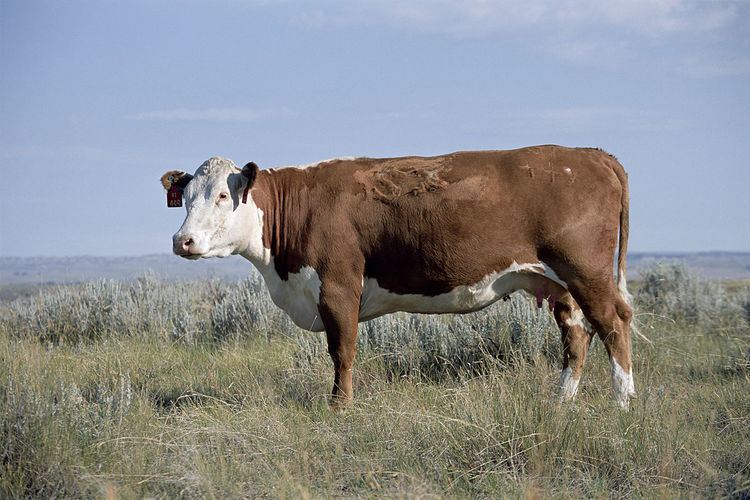 | ||
The genome of a female Hereford cow has been sequenced by the Bovine Genome Sequencing and Analysis Consortium, a team of researchers led by the National Institutes of Health and the U.S. Department of Agriculture. It is one of the largest genomes ever sequenced. The results, published in the journal Science on April 24, 2009, are likely to have a major impact on livestock breeding. They were obtained by more than 300 scientists in 25 countries after six years of effort.
The size of the bovine genome is 3 Gb (3 billion base pairs). It contains approximately 22,000 genes of which 14,000 are common to all mammalian species. Bovines share 80 percent of their genes with humans; cows are less similar to humans than rodents (humans and rodents belong to the clade of Supraprimates). They also have about 1,000 genes shared with dogs and rodents but not identified in humans.
The charting of key DNA differences, also known as haplotypes, between several varieties of cattle could allow scientists to understand what is the role of some genes coding for products of economic value (milk, meat, leather). It opens new perspectives for enhancing selective breeding and changing certain cattle characteristics for the benefit of farmers.
